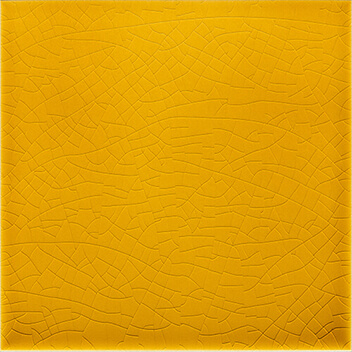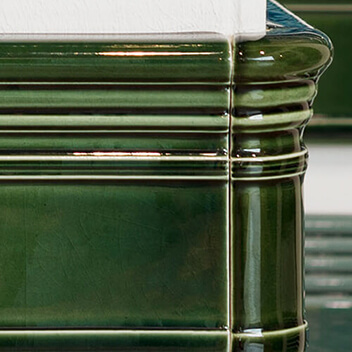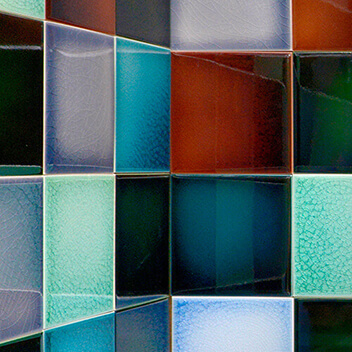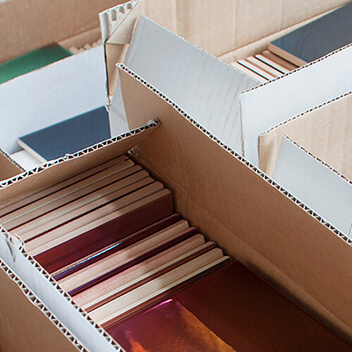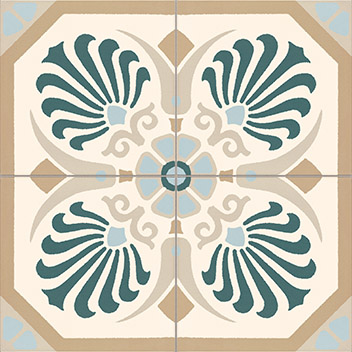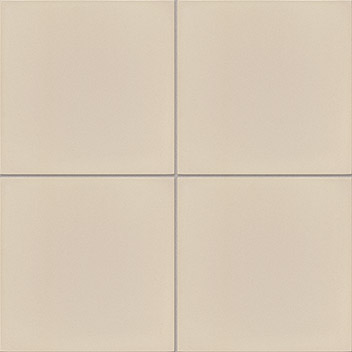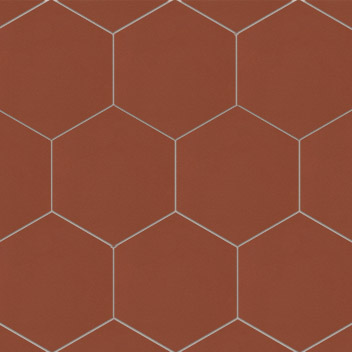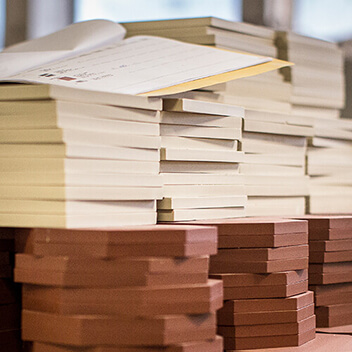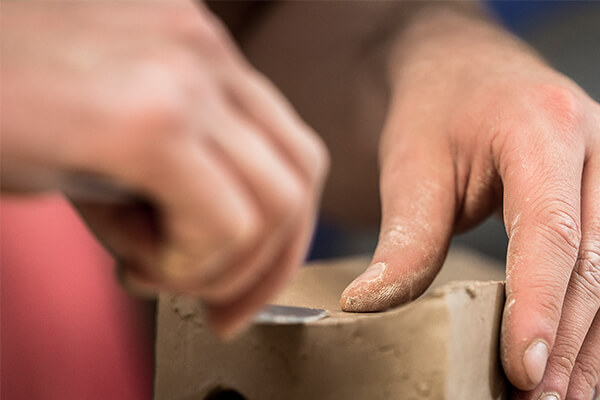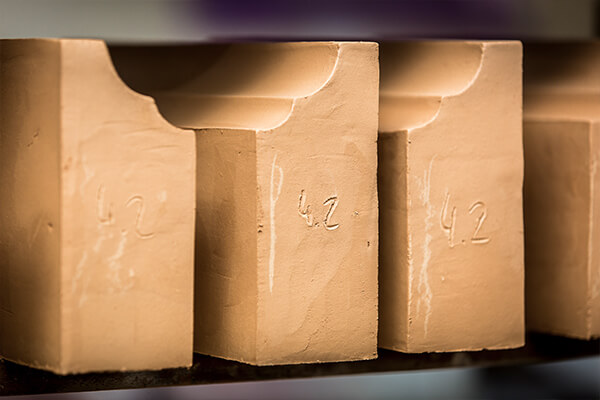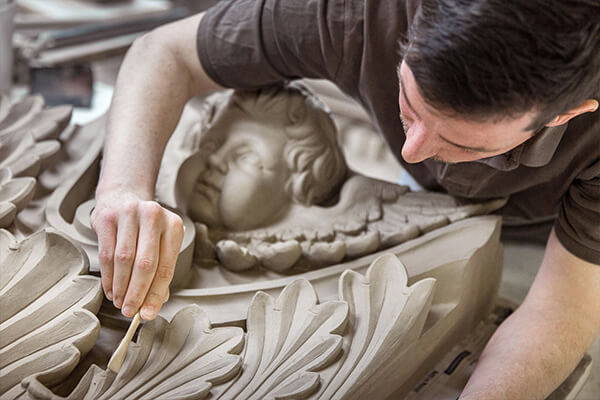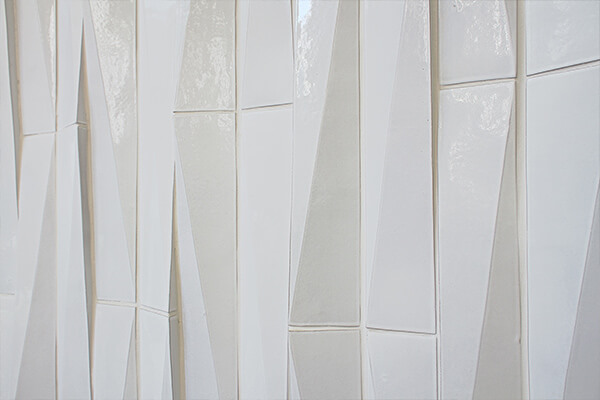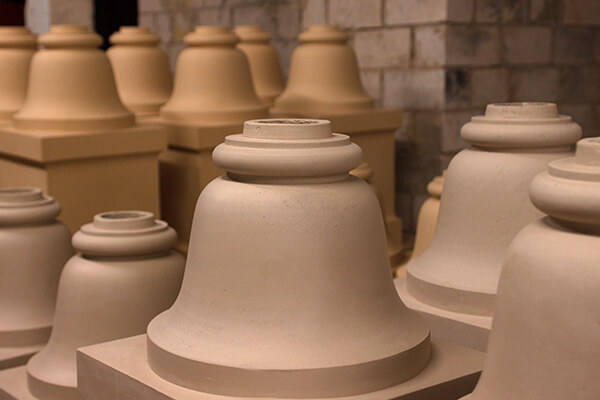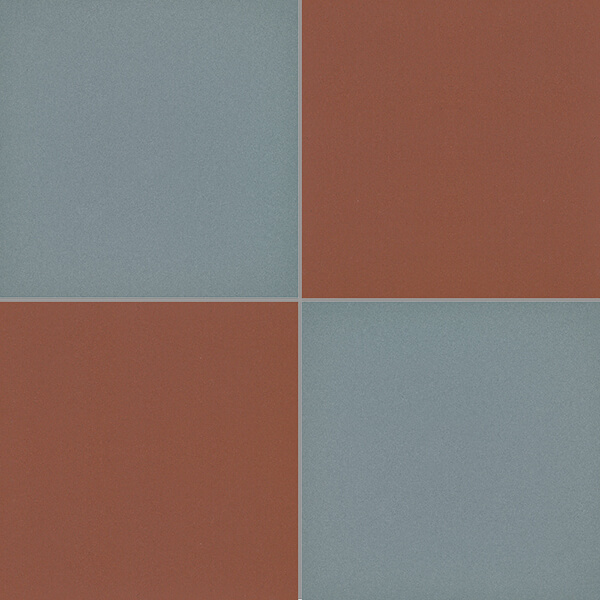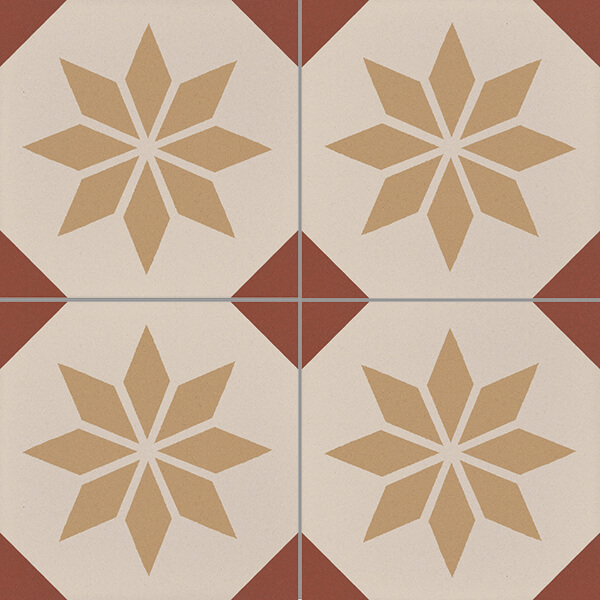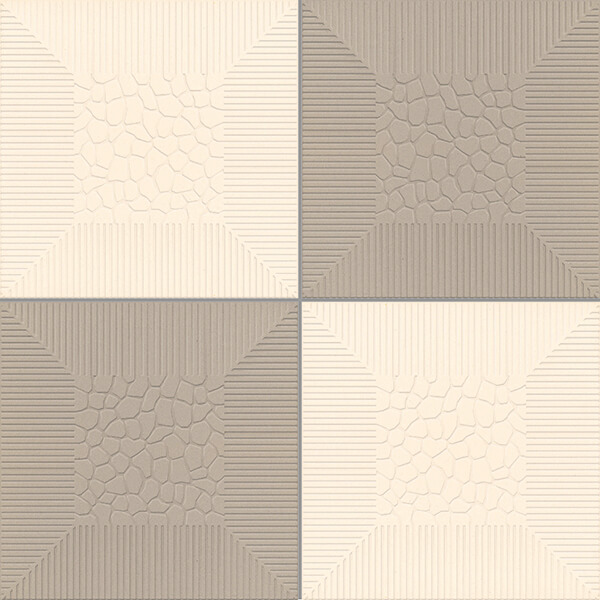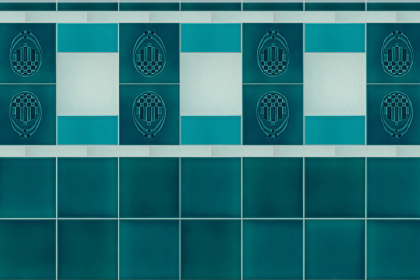
Cement tiles
or
stoneware tiles?
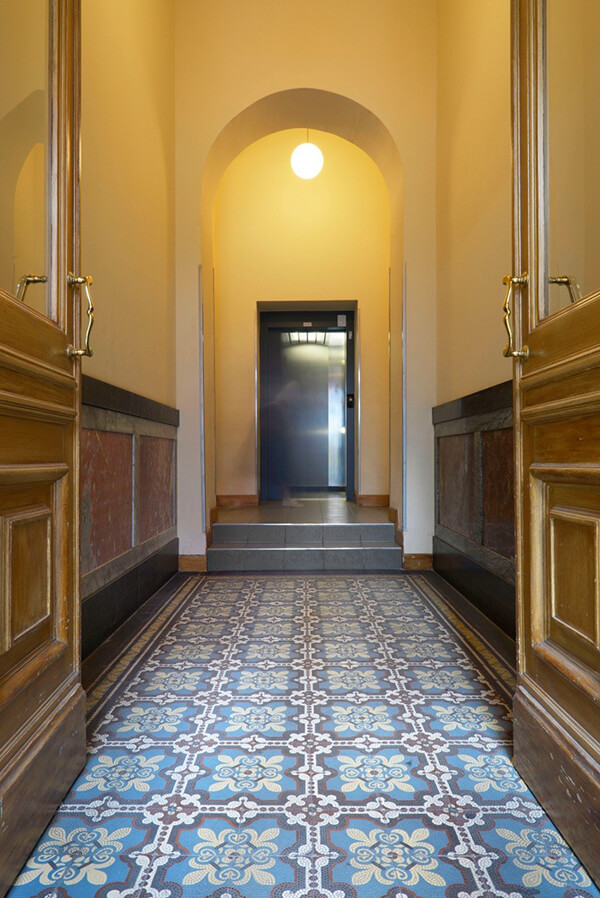
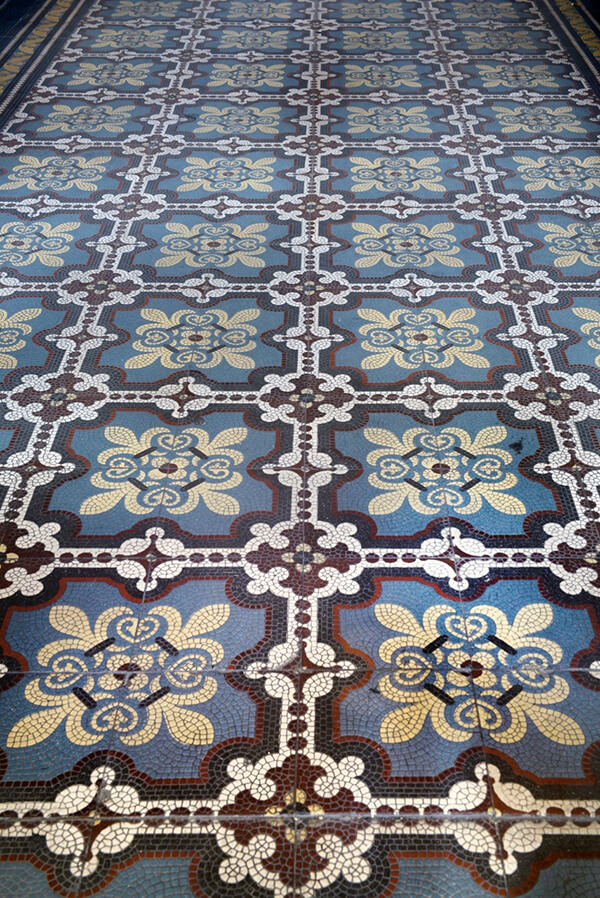
Today, cement tiles are synonymous with multi-coloured floor tiles. However, the beautiful ornamental floor tiles we know from old apartment buildings are almost always made of stoneware. They are therefore ceramic tiles and not cement tiles, as is often assumed. The latter were rarely used around 1900 as an inexpensive substitute for the high-quality stoneware tiles.
STONEWARE TILES VERSUS CEMENT TILES
PRODUCTION-RELATED PROPERTIES
OF CEMENT TILES
Cement tiles consist of various rock flours and cement. The tile gets its strength from the reaction with the mixing water, i.e. the hydration of the water that previously “escaped” during the burning of the lime. The cement tile then hardens in three phases over several weeks.
This “cold” reaction enables a colourful range of colours for cement tiles. The open-pored surface is sealed and coated with a layer of wax, which is what makes the colour brilliance effective in the first place. Cement tiles are only suitable for interior installation.
DISADVANTAGES OF CEMENT TILES
The price advantage of cement tiles in relation to stoneware is bought with some disadvantages. Cement tiles are relatively soft and therefore sensitive to stains. Therefore, they must be impregnated after installation. In some cases, the floor even has to be sanded before sealing. This makes installation about twice as expensive (70 to 80 euros per square metre) as with standard ceramic tiles.
ALTERNATIVES TO CEMENT TILES
For families with children or people who cannot and do not want to constantly watch out for the sensitivity of cement tiles, stoneware or porcelain stoneware, as it is mostly called today, is a very good alternative. Moreover, unlike cement tiles, ceramic tiles are also suitable for outdoor use.


